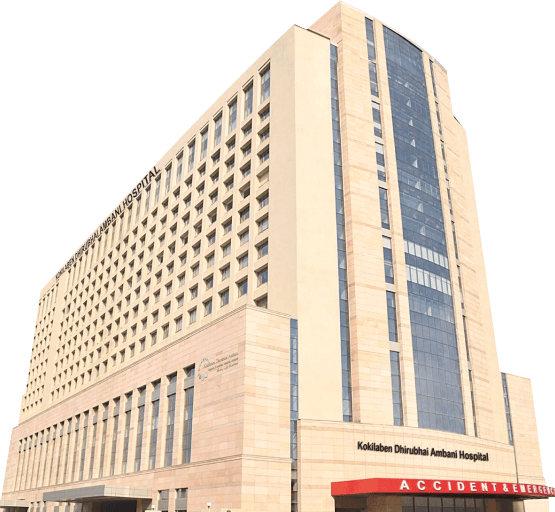Piles, also known as hemorrhoids, are a common condition that affects a significant portion of the population. While often associated with discomfort and embarrassment, piles are a treatable condition that can be effectively managed with the right approach at facilities like Kokilaben Hospital Mumbai. This article delves into the understanding and management of piles, shedding light on their causes, symptoms, and various treatment options available.
What are Piles?
Piles are swollen and inflamed veins in the rectum and anus. They can be classified into two main types: internal piles, which occur within the rectum, and external piles, which develop under the skin around the anus. These enlarged veins can cause a range of symptoms, from mild discomfort to severe pain and bleeding.
Causes and Risk Factors
Several factors can contribute to the development of piles, including:
1. Constipation and straining during bowel movements: Chronic constipation and the excessive straining required to pass stools can put excessive pressure on the veins in the rectum and anus, leading to their swelling and inflammation.
2. Pregnancy: The increased pressure on the pelvic veins during pregnancy can cause the veins in the rectum to swell, leading to the development of piles.
3. Aging: As we age, the supportive tissues in the rectum and anus can weaken, increasing the risk of piles.
4. Obesity: Excess weight can put additional pressure on the pelvic veins, contributing to the formation of piles.
5. Genetics: Some individuals may have a genetic predisposition to developing piles.
Symptoms and Complications
The symptoms of piles can range from mild to severe, depending on the severity of the condition. Common symptoms include:
– Bleeding during bowel movements
– Itching or irritation around the anus
– Pain or discomfort in the anal region
– Swelling or protrusion around the anus
If left untreated, piles can lead to complications such as anemia (due to blood loss), strangulated hemorrhoids (a condition where the blood supply to the hemorrhoid is cut off, causing severe pain and potentially requiring emergency treatment), and fissures (cracks or tears in the anal tissue).
Treatment Options
The treatment approach for piles depends on the severity of the condition and the individual’s overall health. Here are some of the common treatment options:
1. Lifestyle Changes and Home Remedies:
– Increasing fiber intake to soften stools and reduce straining
– Drinking plenty of fluids to prevent constipation
– Applying over-the-counter creams or ointments to relieve symptoms
– Sitz baths (soaking the anal area in warm water) to promote healing
2. Medications:
– Over-the-counter or prescription medications, such as pain relievers, corticosteroid creams, or suppositories, can help reduce inflammation and relieve symptoms.
3. Minimally Invasive Procedures:
– Rubber band ligation: A small rubber band is placed around the base of the hemorrhoid to cut off its blood supply, causing it to shrink and fall off.
– Sclerotherapy: A chemical solution is injected into the hemorrhoid to shrink it.
– Infrared coagulation: A specialized device is used to cauterize and shrink the hemorrhoid.
4. Surgical Procedures:
– Hemorrhoidectomy: Surgical removal of the hemorrhoid, typically recommended for severe or recurring cases.
– Hemorrhoid stapling: A procedure that involves stapling the prolapsed hemorrhoid back into place.
Prevention and Management
While piles can be effectively treated, it is essential to adopt preventive measures to reduce the risk of recurrence or avoid the condition altogether. Some recommended strategies include:
1. Maintaining a high-fiber diet: Consuming plenty of fiber-rich foods, such as fruits, vegetables, whole grains, and legumes, can help promote regular bowel movements and prevent constipation.
2. Staying hydrated: Drinking an adequate amount of fluids can help soften stools and prevent straining during bowel movements.
3. Exercising regularly: Regular physical activity can help improve overall health and promote regular bowel movements.
4. Managing weight: Maintaining a healthy weight can reduce the pressure on the pelvic veins and lower the risk of developing piles.
5. Avoiding prolonged sitting or straining: Prolonged periods of sitting or straining during bowel movements can exacerbate piles or increase the risk of their development.
6. Seeking prompt medical attention: If you experience persistent or severe symptoms, it is crucial to seek medical attention promptly to prevent complications and receive appropriate treatment.
Conclusion
Piles are a common condition that can cause discomfort and potentially lead to complications if left untreated. By understanding the causes, symptoms, and available treatment options, individuals can take proactive steps to manage and alleviate the condition. Additionally, adopting preventive measures, such as maintaining a high-fiber diet, staying hydrated, and exercising regularly, can significantly reduce the risk of developing piles or experiencing recurrences. If you experience persistent or severe symptoms, it is essential to seek medical advice from a healthcare professional to receive the appropriate treatment and manage the condition effectively.

